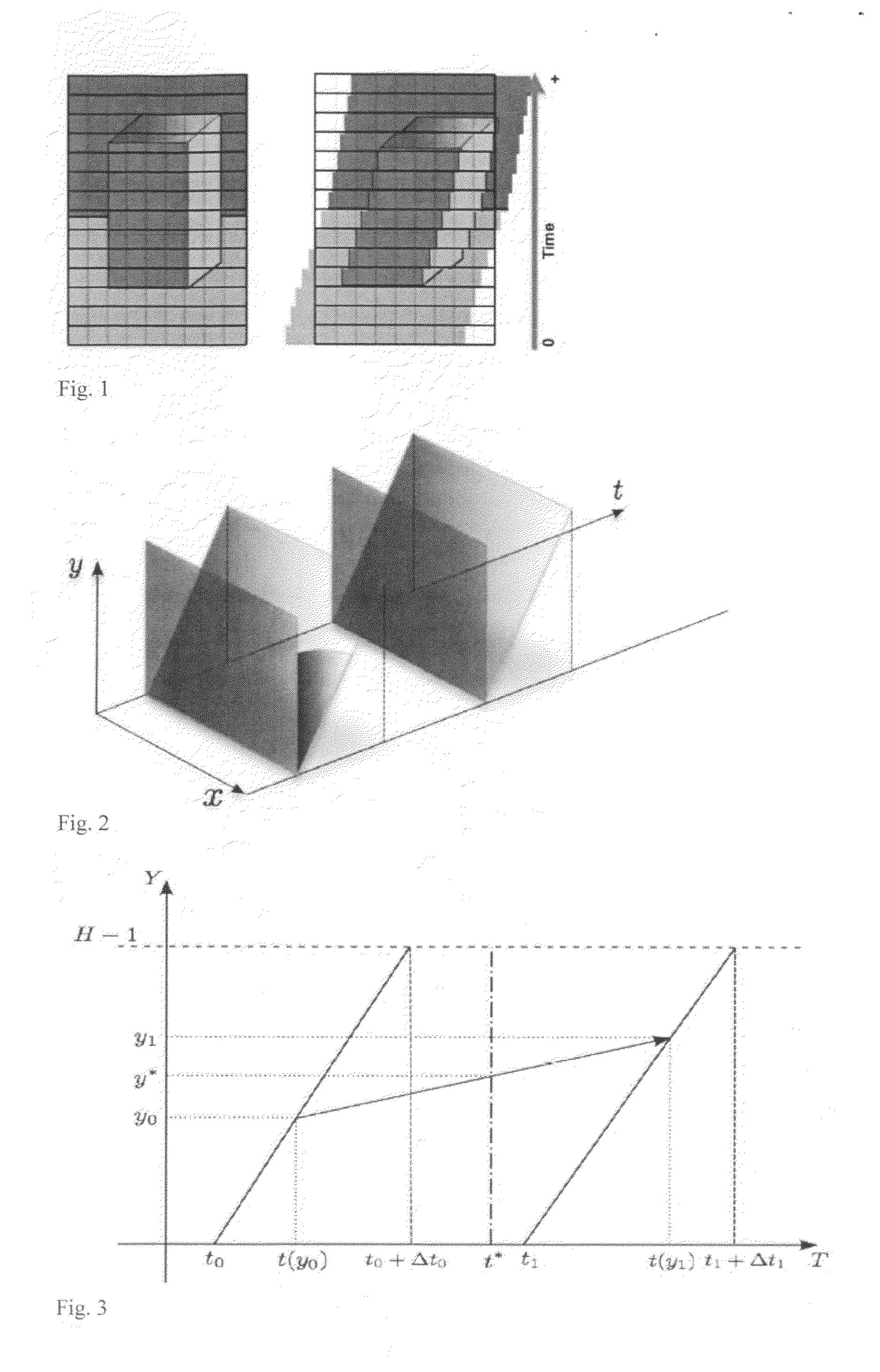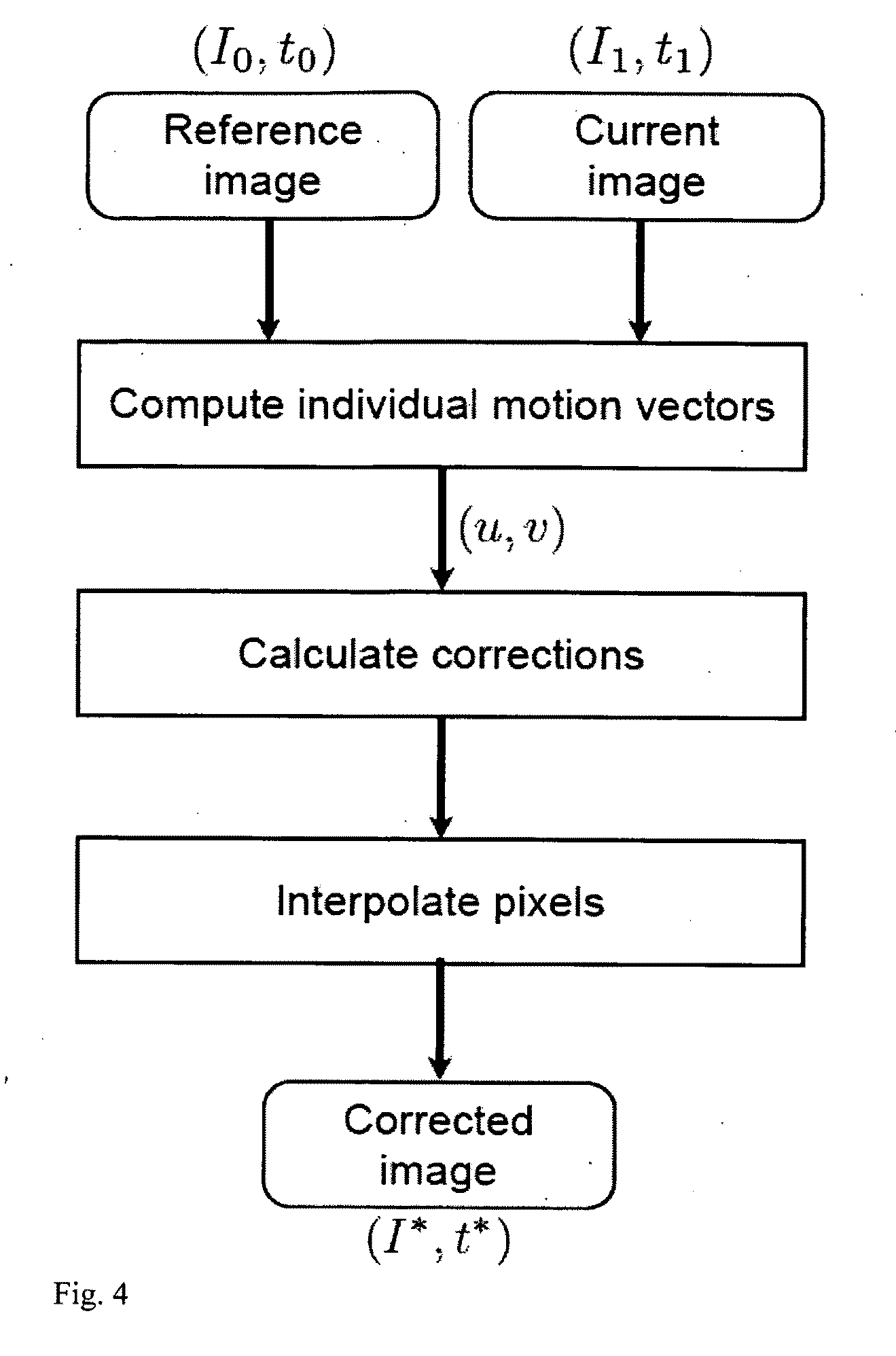Method to compensate the effect of the rolling shutter effect
- Summary
- Abstract
- Description
- Claims
- Application Information
AI Technical Summary
Benefits of technology
Problems solved by technology
Method used
Image
Examples
Embodiment Construction
[0032]Different methods of correcting the rolling shutter presented above consider only the geometric aspect of image formation, either as a projection of a 3D scene on the 2D surface of the sensor either as a result of 2D-2D transformation between successive frames.
[0033]One of the features of the invention is to approach the problem from a different point of view, by considering the available image data in a 3D space where the 3 dimensions are given the 2 dimensions of the images (abscissa and ordinate) plus time. Indeed, capturing a correct image of “CCD” type is equivalent to measure the intensity of light on the sensor plane at a fixed time t: It is therefore a vertical plane in this 3D space abscissa, ordinate, time (x, y, t) (FIG. 2, perpendicular frame).
[0034]CMOS imagers, meanwhile, capture a 2D image (x, y) as well, but each line corresponds to different moments in time. These time instants are distributed linearly between the start and the end of the acquisition of an ima...
PUM
 Login to View More
Login to View More Abstract
Description
Claims
Application Information
 Login to View More
Login to View More - R&D
- Intellectual Property
- Life Sciences
- Materials
- Tech Scout
- Unparalleled Data Quality
- Higher Quality Content
- 60% Fewer Hallucinations
Browse by: Latest US Patents, China's latest patents, Technical Efficacy Thesaurus, Application Domain, Technology Topic, Popular Technical Reports.
© 2025 PatSnap. All rights reserved.Legal|Privacy policy|Modern Slavery Act Transparency Statement|Sitemap|About US| Contact US: help@patsnap.com



